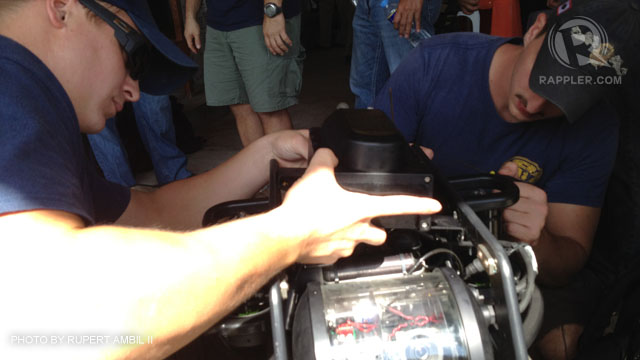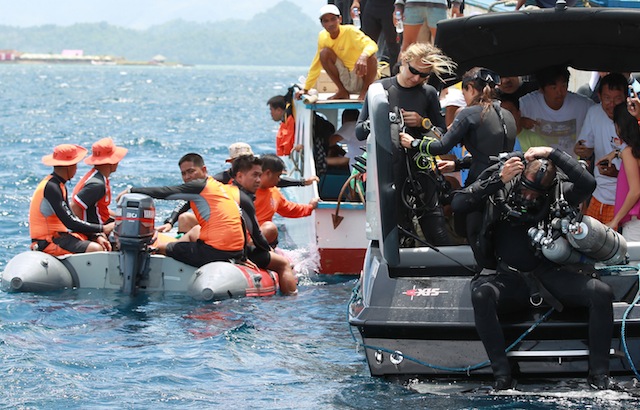SUMMARY
This is AI generated summarization, which may have errors. For context, always refer to the full article.

MANILA, Philippines – Aerial and undersea search and rescue operations for Interior and Local Government Secretary Jesse Robredo, pilot Jessup Bahinting, and Nepalese co-pilot Kshitiz Chand continued early Tuesday, August 21.
On Tuesday, the search and rescue operations for the 3 persons will have reinforcements in the form of a remote operated vehicle (ROV), set to arrive at the site late in the morning, said Transport Secretary Mar Roxas, who oversees the operations.
Roxas said the ROV is from the US Navy, and is scheduled to be deployed between 10 and 11 am. He added that the underwater vehicle can be deployed up to depths of 500 meters below the surface.

Roxas told reporters Monday evening, August 20, divers are focusing on a one square kilometer (1 sq km) area at sea believed to be where the Piper Seneca is lying.
After the teams returned, Roxas revealed that they had pinpointed a “debris field” of 180-210 meters in diameter some 2.5 km from shore.
‘Rifle approach’
Roxas said the search on Tuesday will be “very, very focused,” using what they called a “rifle approach.”
“Sa ganoon, mas mataas nag probability na may findings,” he told reporters.

Overnight, surface patrol and area surveys by the Navy and the Coast Guard continued, while the air and undersea searches were suspended.
Nighttime search and rescue operations are hampered by strong underwater currents and poor visibility.
The government is still on search and rescue mode, and the transport chief said the switch to retrieval mode is a decision that will have to be made based on protocol.
Roxas also said the local and foreign volunteer technical divers who have been helping in the search and rescue operations will be back today to help.
The divers, he added, are coordinating with each other and planning their dives according to available equipment and supplies.
The first dive has been scheduled at 6 am, to maximize daylight. Due to the depth of the search area, the divers can only do a maximum of 2 dives a day.
Robredo and the 2 aviators went missing after their Piper Seneca plane crashed at sea just off Masbate City’s Moises Espinosa Airport on Saturday, August 18.
Robredo’s aide-de-camp, police inspector Jun Abrasado, is so far the lone survivor. – Rappler.com
Add a comment
How does this make you feel?
There are no comments yet. Add your comment to start the conversation.